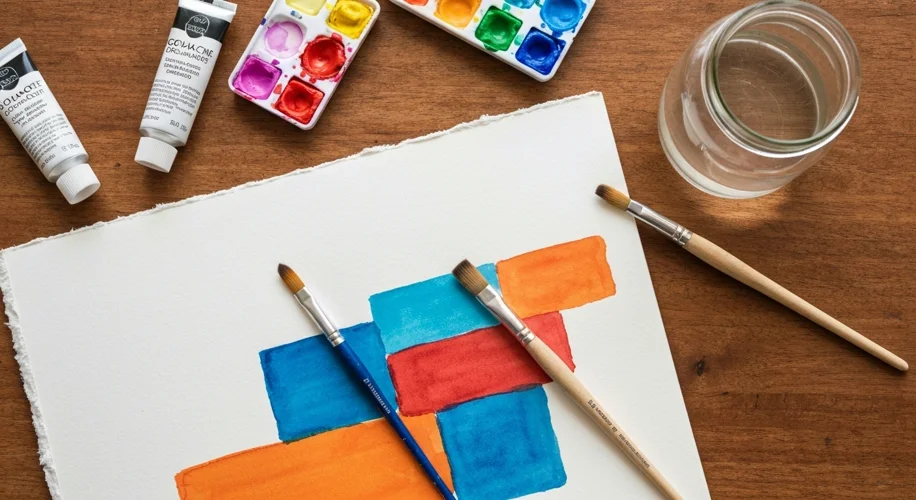Hey everyone!
I’m so excited to share what I’ve been experimenting with lately: gouache paints. If you’re new to the art world or just looking for a new medium to play with, gouache might be just the thing. It’s essentially an opaque watercolor, and it’s incredibly versatile.
I first encountered gouache a few years ago when I was looking for something with the ease of watercolor but with more covering power. Traditional watercolors can be tricky because once a color is down, it’s hard to cover it up completely. Gouache, on the other hand, dries to a matte finish and can be easily reactivated with water, meaning you can layer lighter colors over darker ones or correct mistakes without a fuss.
What makes gouache special?
- Opaque Finish: Unlike watercolors, gouache has pigments suspended in a binder, giving it a lovely, creamy opacity. This means you can achieve solid blocks of color and cover previous layers.
- Matte Texture: It dries to a beautiful, velvety matte finish. This makes it great for reproducing prints because it doesn’t have a sheen that can cause glare.
- Reactivates with Water: This is a big one for me. If you make a mistake or want to blend colors after they’ve dried, a little water can bring them back to life, allowing for easy adjustments and blending.
- Versatile: You can use it thickly like acrylics or thin it down with water for transparent washes, similar to watercolors. It really does offer the best of both worlds.
My Experience So Far
As a graphic designer turned artist, I appreciate how gouache bridges the gap between digital and traditional art. The clean, flat colors can mimic the look of vector graphics, while the ability to layer and blend feels very painterly. It’s also been fantastic for my Etsy shop. The matte finish reproduces really well in prints, and the vibrant colors I can achieve with gouache have been a hit with my customers.
One of the biggest rewards is how forgiving it is. When I was first starting, I found myself hesitant to try new things with other mediums, worried about making irreversible mistakes. With gouache, I can layer over an area I’m not happy with, or gently lift color with a damp brush. It’s really helped me feel more confident in exploring bold color combinations and new compositions.
Tips for Getting Started:
- Start with a basic set: You don’t need a huge range of colors to begin. A starter set with primary colors, black, and white will let you mix a vast array of hues.
- Use good quality paper: Watercolor paper or mixed-media paper (around 140lb/300gsm) works best to prevent buckling.
- Experiment with water: Play around with how much water you use. More water gives you a thinner, more transparent application, while less water gives you a thicker, more opaque feel.
- Don’t be afraid to layer: Layering is key to gouache. Let layers dry before adding more, or gently blend wet-into-wet.
I’m really enjoying the process of discovering what gouache can do. It’s a medium that feels both modern and classic, and it’s definitely inspiring a lot of new ideas for my artwork. I can’t wait to see where it takes me next!
This week’s inspiration is all about vibrant, flat color fields, and gouache is perfect for achieving that.

